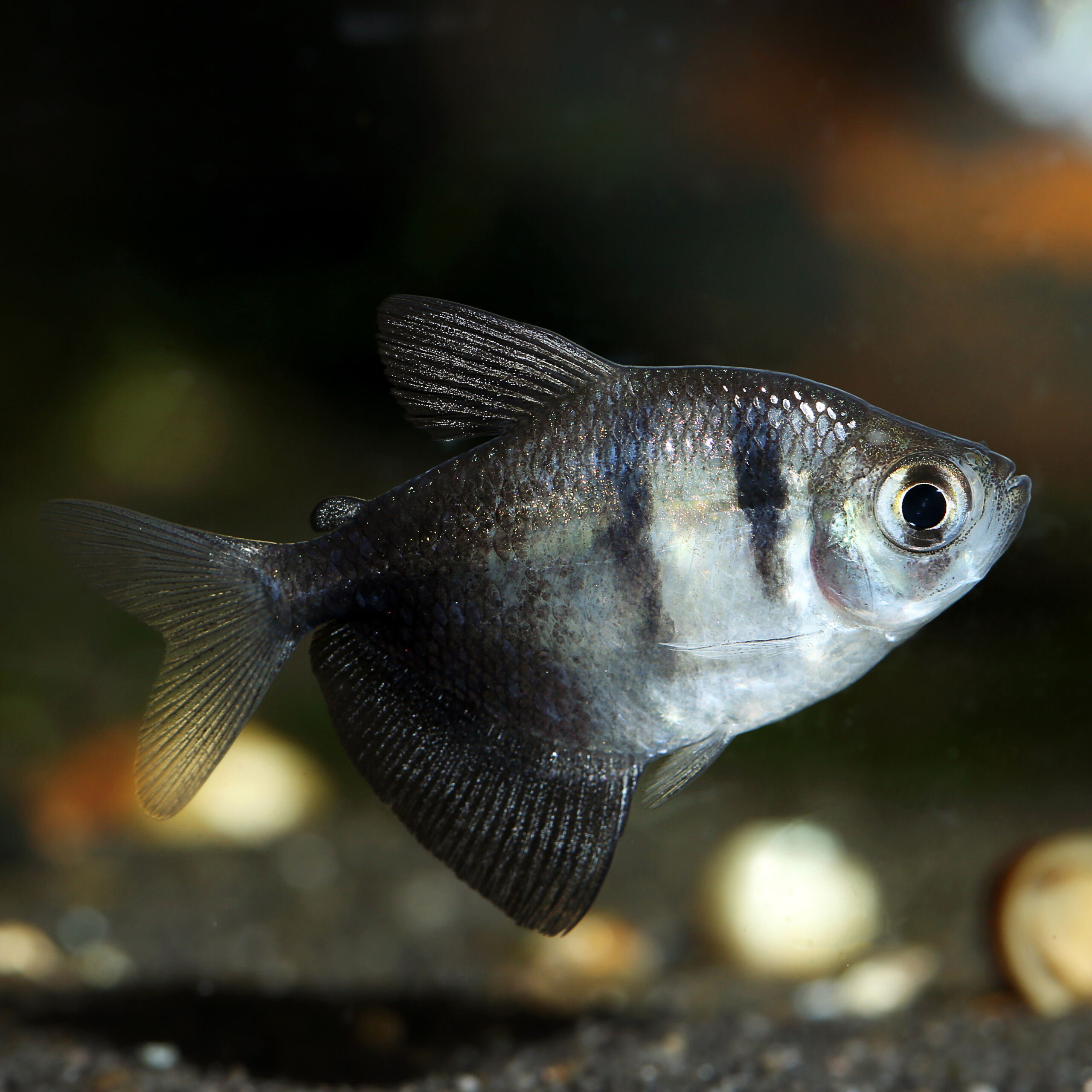Black Widow Tetra
Gymnocorymbus ternetzi
The Black Widow Tetra is a beautiful, dark-colored schooling fish from South America
- popular aquarium fish
- easy to maintain
- lively schooling fish
Out of stock
Receive in-stock notifications for this.
 Delivery in a few working days
Delivery in a few working days
 Free shipping from €60 across Austria
Free shipping from €60 across Austria





Important data
Product description & details
The Black Widow Tetra, originally from South America, is a very popular aquarium fish that has long been known in aquaristics. It is about 5.5 cm long and has a high-contrast coloration of black or gray and a bright silver.
Care in the aquarium
Due to its willingness to swim, the Black Widow Tetra needs a tank with an edge length of at least 80 cm. As a schooling fish, it only feels comfortable in the company of its own kind and should therefore be kept in a group of at least 8 animals (10 is better). This Tetra is not very difficult to keep. Ideally, the water should be rather soft (< 15 °dGH) and the pH should be between 6.0 and 7.5. Loose planting with large-leaved plants and floating plants gives the tetra a sense of security and a chance to retreat.
Feeding
Flake food as well as small live and frozen food are readily accepted by the Black Widow Tetra.
Sexual characteristics and breeding
Females differ from their male counterparts in having a fuller physique. They are also slightly larger when fully grown. In order to put Gymnocorymbus ternetzi in breeding mood, they should be fed more live food. A water hardness of around 10°dGH is also optimal. A specially designed breeding tank is recommended for breeding, as the adult animals tend to steal their spawn. A spawning female will have a large belly and, under the right conditions, will soon shed its eggs. Ideally, moss or a spawning grid is used so that the eggs are not eaten immediately by the parents. After a few days, up to 300 young fish hatch and can be fed with very small food such as rotifiers and parameciums as well as powdered food.





